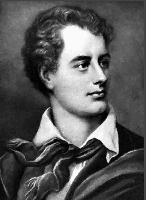


|
|

Alaric Pugh OBI, the dynamic, slim-waisted, blonde genius behind the many graet achievements of the Hurley-Pugh Mechanicals Co, was born in Penury, North Yorkshire in 1884, eldest son of the Most Reverend Theodoric Pugh, Rural Dean of Cruftoft Without and St Olave's-by-Cruftoft. He was educated at Beaseley's Dame School and, at his father's insistence, the Scunthorpe High School for Ladies.
Raised as a girl for the first 16 years of his life and forbidden to cut his hair or wear trousers even after the traumatic lacrosse incident of 1898, to which he refers tangentially in his autobiography, Alaric took the first opportunity to leave home as soon as his father's back, for once, was turned and indentured himself to the Hurley Steam Thrunging Works.
There he caught old J.H's eye and became his amanuensis. While his mechanical talents were not immediately obvious, during relaxed moments he was able to convince the gruff patrician of the merits of a into motor bicycles.
From Alaric's prolific pen flowed such classics as the Manx Brooklands, the Wildebeeste and the limited edition Shaw-Ross Baghdad (sadly never delivered to the intended customer, a close friend of Pugh's who was killed racing between Dorset "cottages" on a less prestigious marque.
Alaric patriotically threw himself into military after 1914 but unfortunately, many of his designs were inadvertently communicated to Hurley-Schnicklegrüber in Danzig, although hey still assisted in the defeat of the Böche. The Pugh Patent Detonator, which initiated under all circumstances - notably as soon as connected to any sort of explosive - became standard Hun issue - as did the Pugh Patent Gas Shell Fuze, which would burst the shell whenever any acceleration was sensed. While undoubtedly effective in dispersing gas, this was somewhat inconvenient for the crews of the German batteries.
Alaric was awarded the Order of British India in 1919 as a result of his design of the Pugh Patent Pocket Mitrailleuse, a tiny machine pistol which could sustain an effective rate of fire of 600 rounds per minute. The first consignment to the Indian Army was captured by Pathans, who took to them in preference to their two-rupee jezails. Fortunately for the Waziristan Brigade, a minor flaw in the Pugh Pocket Mitrailleuse Patent Clockwork Holster layout led to an entire Pathans clan emasculating while forming up for an attack on Fort Bhaji, at a reduced cyclic rate of 327 rounds per minute (the H-P whale tallow breech lubricant had emulsified due to operational altitude, a problem "Killer" once experienced on Snafell when similar specification grease was used in Wildebeeste wheel bearings - it was cured by upgrading from Minke to Sperm tallow). With the Pathans rendered hors de combat, this allowed for a massacre by the 1/6 Madrassi Lancers, the thanks of a grateful Viceroy and the swearing of a (high-pitched) fatwa on Alaric Pugh by the few Pathan survivors.
Pugh turned his hand to military aviation in the 1940s, and many classic designs flowed from his draughting table in the "boudoir", as the Works studio was known to apprentices. It was a huge tragedy when a rumour that the all-cast-iron Saxon was to be introduced into squadron service coincided with the accidental targeting by a Bomber Command wing of the Scunthorpe Works, later citing a similarity between the Proving Sheds at Dusseldorf, if viewed through scratched perspex from 30,000 ft. Alaric was holding a soirée in the "boudoir" for enthusiastic young troopers from the 28th Scunthorpe Light Chevaliers - known as the "Fighting Nancies" ever since a tactical alliance with Bugar irregulars in the Crimea - at the time. Their remains were interred together, as it was impossible to prise the charred bodies apart..
Alaric never married, but the Pugh name lives on through his only adopted son, the well known film and theatrical costumier Geiseric Pugh.,
"Nemesis"
previous article | next article